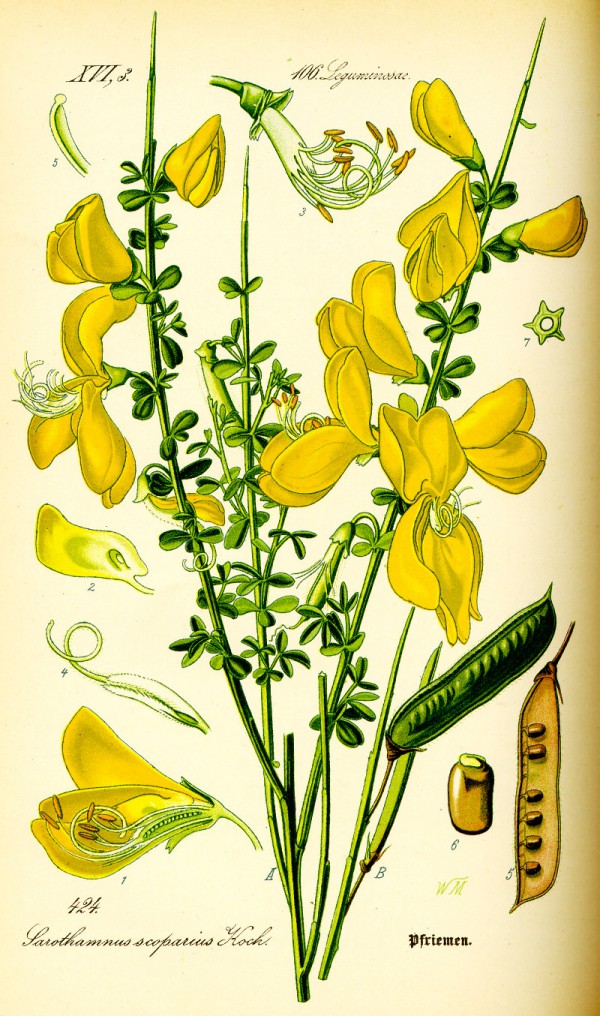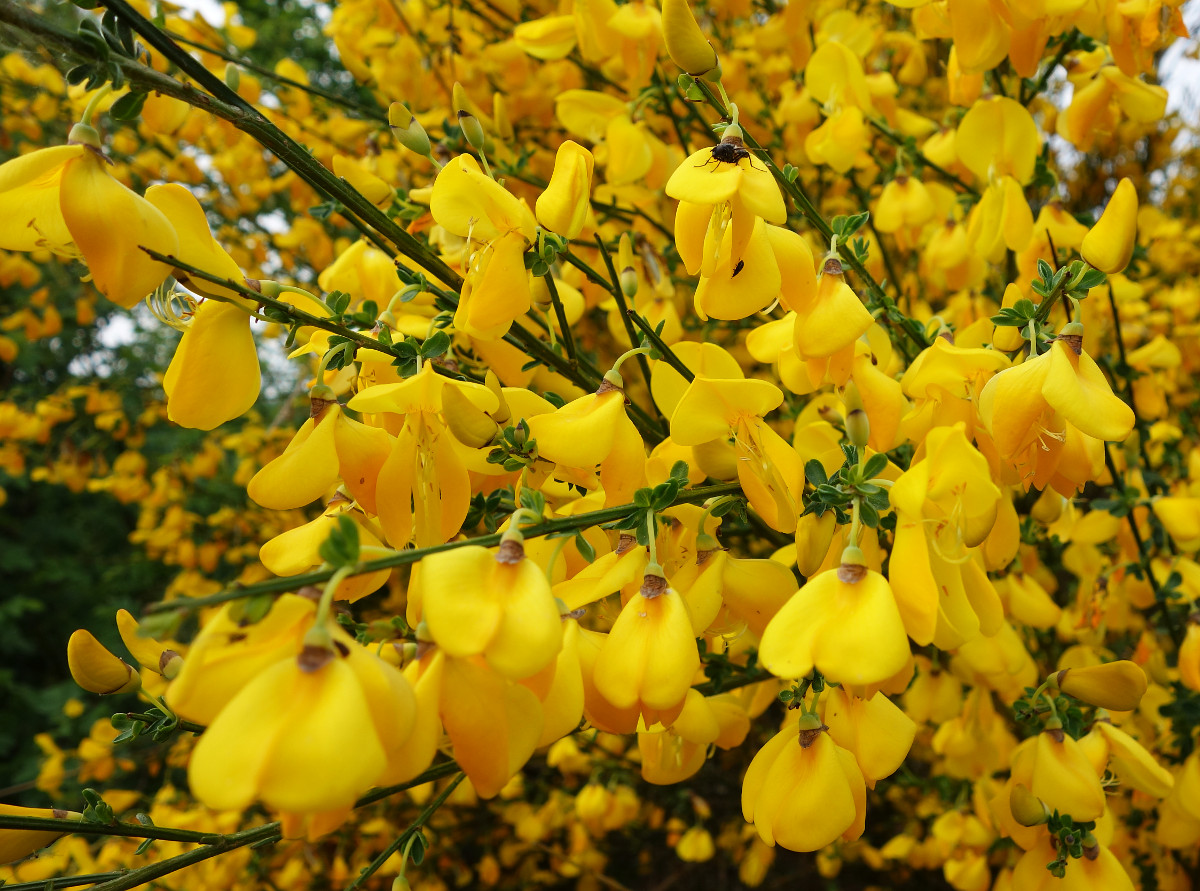Benutzer-Werkzeuge
Cytisus scoparius (L.) Link - syn. Sarothamnus scoparius (L.) Wimmer ex Koch - Fabaceae
common broom, Scotch broom, Besenginster
Erect shrub, native in Europe, 0.50-2m high; twigs green, 5-squared; leaves trifoliate, simple on young shoots; flowers bright yellow, axillary, solitary or in pairs.
„C. scoparius has been introduced into several other continents outside its native range and is classified as a noxious invasive species in California and the Pacific Northwest in North America, in Australia, New Zealand and India…
The characteristic constituents are biogenic amines (mostly tyramine in the young shoots), flavonoids (spiraeoside and scoparoside), isoflavones and their glycosides (genistin), as well as allelopathic quinolizidine alkaloids (mostly sparteine, lupanine, scoparin and hydroxy-derivatives).“
http://en.wikipedia.org/wiki/Cytisus_scoparius
„Sparteine is a class 1a antiarrhythmic agent; a sodium channel blocker. It is an alkaloid and can be extracted from scotch broom … containing a tetracyclic bis-quinolizidine ring system derived from three C5 chains of lysine, or more specifically, L-lysine.“
http://en.wikipedia.org/wiki/Sparteine
„Cytisus scoparius… is taken to nourish Yin and invigorate the heart & liver in traditional
Chinese medicine (TCM)…
Sparteine and sparteine-derivatives like 11,12-dehydrosparteine is predominant in shoots and flowers whereas lupanine-type alkaloids are mainly accumulated in seeds, pods and roots. Quinolizidine alkaloids namely anagyrine, angustifoline, 13-hydroxyanagyrine, 13-acetoxyanagyrine, dehydroangustifoline, N-methyl angustifoline, cytisine, N-methyl cytisine, N-formylcytisine and sparteine were isolated from stem, leaf, seed, and root, pericarp and seed pods…
The essential oil of fresh flower of Cytisus scoparius contained cis-3-hexen-1-ol, 1-octen-3-ol, benzyl alcohol, phenylethyl alcohol, phenol, cresols, guaiacol, eugenol, benzoic acid, palmitic acid, 8 fatty acids, and n-paraffins. Orobol, genistein, quercetin, aesculetin, p-coumaric acid, and caffeic acid were isolated from the residue after steam distillation of ethereal extract.“
[Cytisus scoparius: A review of ethnomedical, phytochemical and pharmacological Information., Sundararajan, R., Koduru, R., Indo American Journal of Pharmaceutical Research, Vol.4(4), 2014, 2151-2169]
http://www.scopemed.org/fulltextpdf.php?mno=159455

Thomé, O.W., Flora von Deutschland Österreich und der Schweiz, Tafeln, vol.3, t.424 (1885)
http://plantgenera.org/species.php?id_species=316310

Cytisus scoparius, CC BY-SA 3.0, Author: Andreas Kraska

